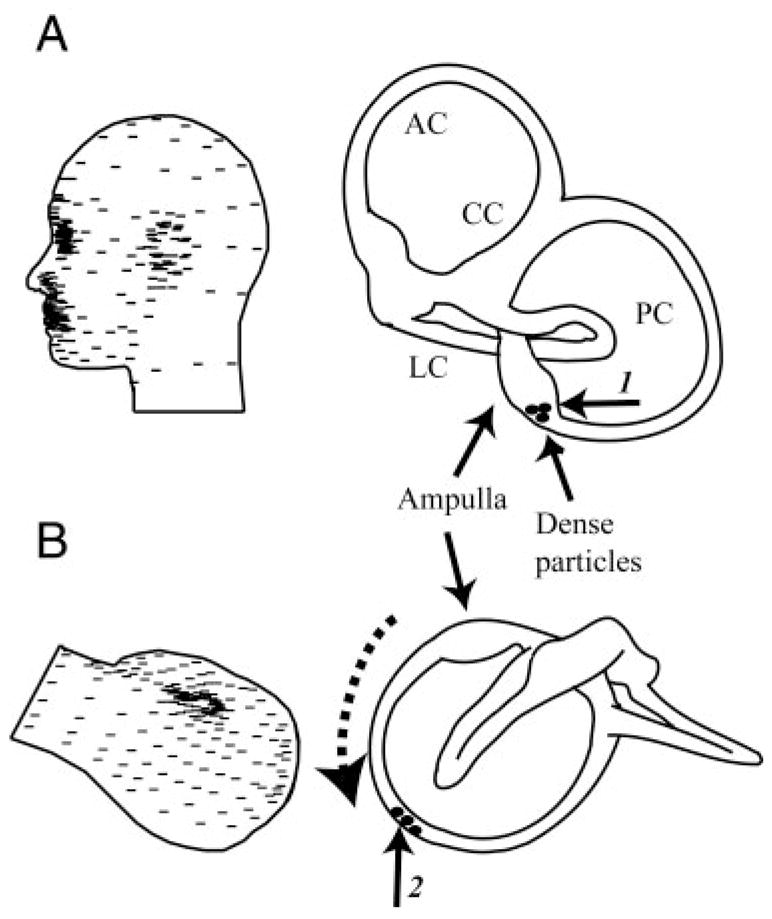FIG. 1.

Canalithiasis mechanism of posterior canal (PC) benign paroxysmal positional vertigo (BPPV). A: dense debris (presumably loose otoconia, not to scale) initially located in the PC ampulla (arrow 1) when the subject is standing. B: in the provocative head-hanging Dix-Hallpike position, gravity causes the dense debris to fall “downhill” (dotted arrow) into the slender lumen as the canal (arrow 2). Debris movement leads to a pathological pressure across the PC-cupula, modulates afferent nerve discharge, and results in BPPV nystagmus. LC, lateral canal; PC, posterior canal; AC, anterior canal; CC, common crus.
